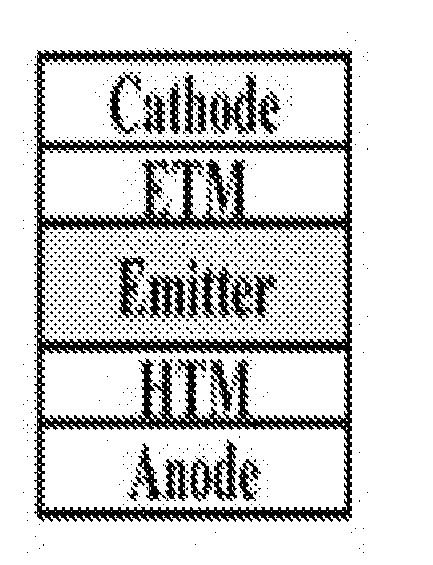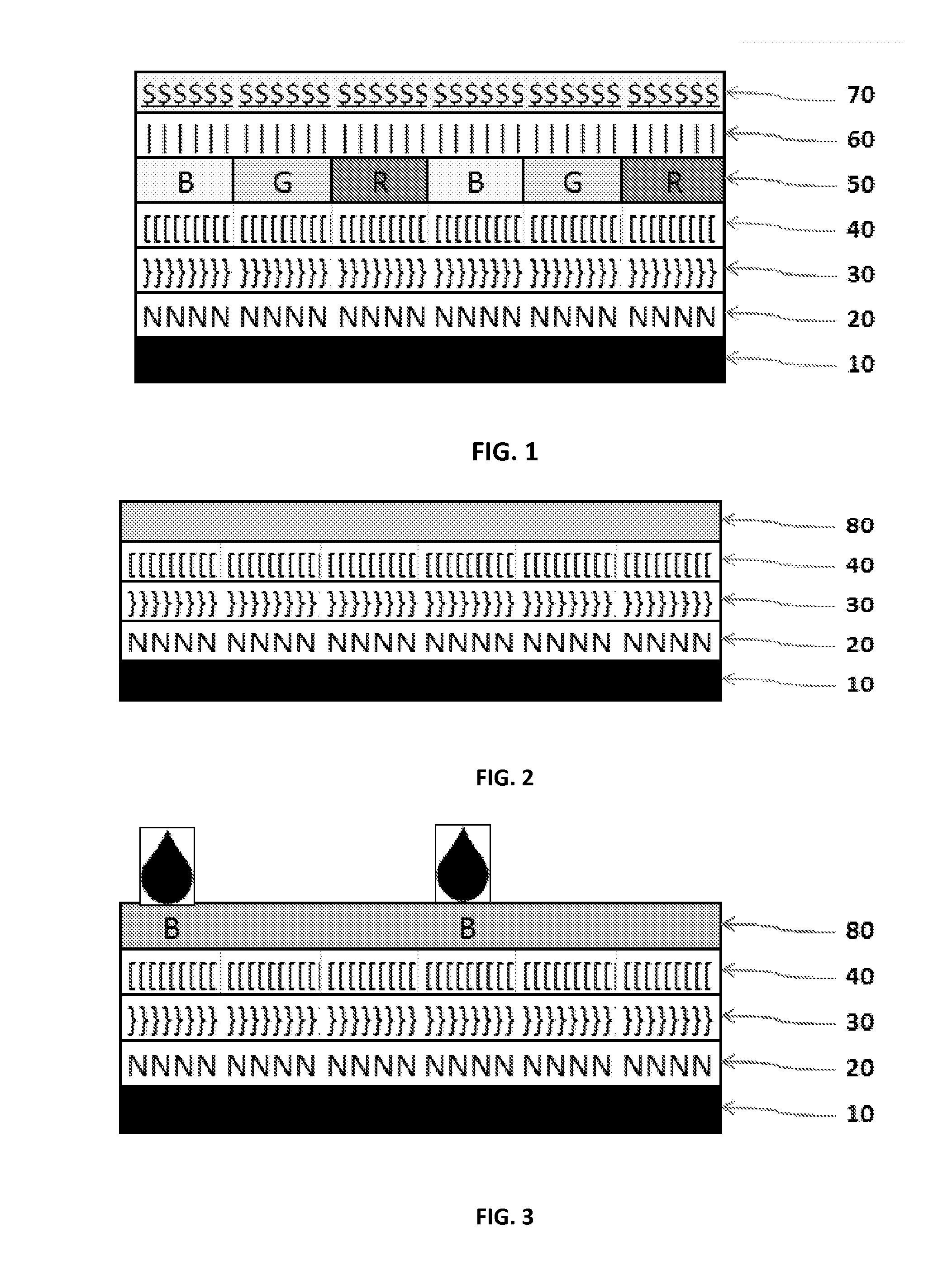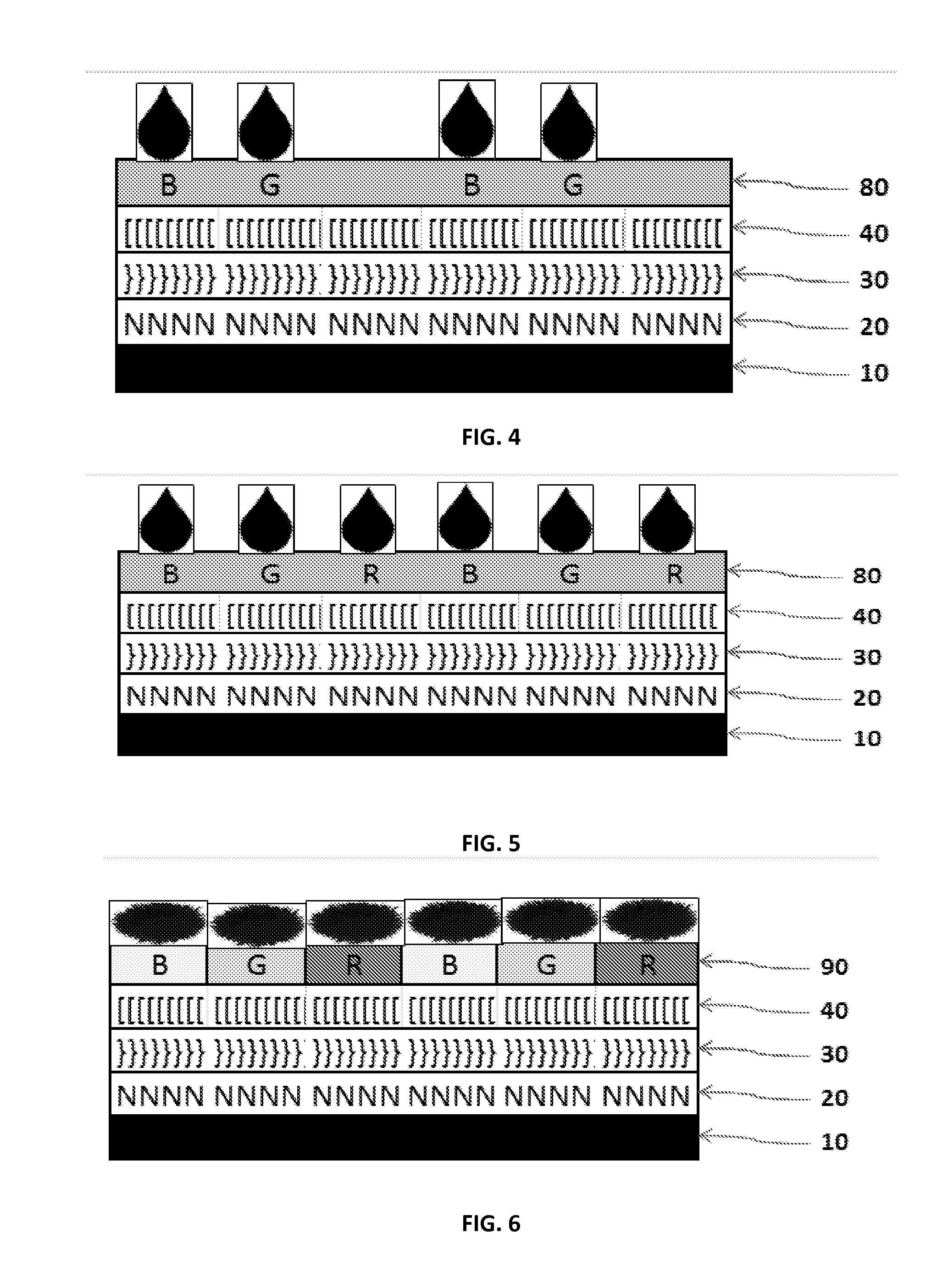Crosslinkable, /Polymerizable and Combinations Thereof Charge-transporting Molecular Glass Mixtures, Luminescent Molecular Glass Mixtures, or Combinations Thereof for Organic Light Emitting Diodes and other Organic Electronics and Photonics Applications and Mothod of Making Same.
a technology of molecular glass and crosslinking, which is applied in the direction of sustainable manufacturing/processing, non-metal conductors, and final product manufacturing. it can solve the problems of inability to provide the required uniformity over large areas, inability to use fluid to assist dye diffusion, and inability to provide the required uniformity
- Summary
- Abstract
- Description
- Claims
- Application Information
AI Technical Summary
Benefits of technology
Problems solved by technology
Method used
Image
Examples
example 1
Preparation of a Crosslinkable, Polymerizable or Combination Thereof Hole-Transporting Carbazole Molecular Glass Mixture Via the Suzuki Reaction
[0264]
[0265]157 miligrams (0.5 millimole (mmol)) 1,3,5-tribromobenzene, 84 miligrams (0.55 mmol) 3-vinylphenyl boronic acid, 169 miligrams (0.55 mmol) 9-methylcarbazole-3-boronic acid pinacol ester, 211 miligrams (0.55 mmol) 9benzylcarbazole-3-boronic acid pinacol ester, and 35 miligrams XPhos Pd G2 (3 mole percent) are added to a Schlenk flask, and then purged under nitrogen. 3 mililiters dry THF and 6 mililiters degassed 0.5 mole K3PO4 are added to the reaction flask under nitrogen. The flask is sealed, heated to 40° C. and stirred overnight.
[0266]Three extracts of 10 mililiters diethyl ether are collected and filtered twice through silica gel. The solution is evaporated with the rotovap and the resulting oil is dissolved in a small amount of dichloromethane and crashed out of 150 mililiter heptanes. The white precipitate is filtered and d...
example 2
Preparation of the Crosslinkable / Polymerizable Plasticizer Tri(6-Acryloyloxyhexyl)1,3,5-Benzenetricarboxylate (TMAC6)
[0268]TMAC6 was made according to the procedure described in Journal of Polymer Science: Polymer Chemistry Edition, Vol, 20, 847-861 (1982), M. F. Molaire. The glass transition temperature was measured by DSC (10° / min) at 72° C.
example 3
Calculation of the Glass Transition Temperatures of Mixtures of the Polymerizable, Crosslinkable Molecular Glass Mixture of Example 1 and the Polymerizable, Crosslinkable Plasticizer TMAC6 Using the Kwei Equation
[0269]The results of the calculation are shown in FIG. 10. and Table 3 below:
TABLE 3Calulated Tg of Mixtures of TMAC6 andthe Crosslinkable / Polymerizable MolecularGlass Mixture of Example 1, Using the Kwei EquationCalculatedExample 1TMAC6Tg ° C.01−72.000.10.9−61.410.20.8−49.650.30.7−36.500.40.6−21.700.50.5−4.930.60.414.230.650.3524.880.70.336.350.80.262.170.90.192.6810129.30
Example 4
Calculation of the Glass Transition Temperatures of Mixtures of Poly Vinyl Carbazole and the Polymerizable, Crosslinkable Plasticizer TMAC6 Using the Kwei Equation
[0270]The results of the calculation are shown in FIG. 11. and Table 4 below
TABLE 4Calulated Tg of Mixtures of TMAC6 and PolyvinylCarbazole (PVK), Using the Kwei EquationCalculatedPVKTMAC6Tg ° C.01−72.000.10.9−59.360.20.8−45.030.30.7−28....
PUM
| Property | Measurement | Unit |
|---|---|---|
| Temperature | aaaaa | aaaaa |
| Temperature | aaaaa | aaaaa |
| Temperature | aaaaa | aaaaa |
Abstract
Description
Claims
Application Information
 Login to View More
Login to View More - R&D Engineer
- R&D Manager
- IP Professional
- Industry Leading Data Capabilities
- Powerful AI technology
- Patent DNA Extraction
Browse by: Latest US Patents, China's latest patents, Technical Efficacy Thesaurus, Application Domain, Technology Topic, Popular Technical Reports.
© 2024 PatSnap. All rights reserved.Legal|Privacy policy|Modern Slavery Act Transparency Statement|Sitemap|About US| Contact US: help@patsnap.com










